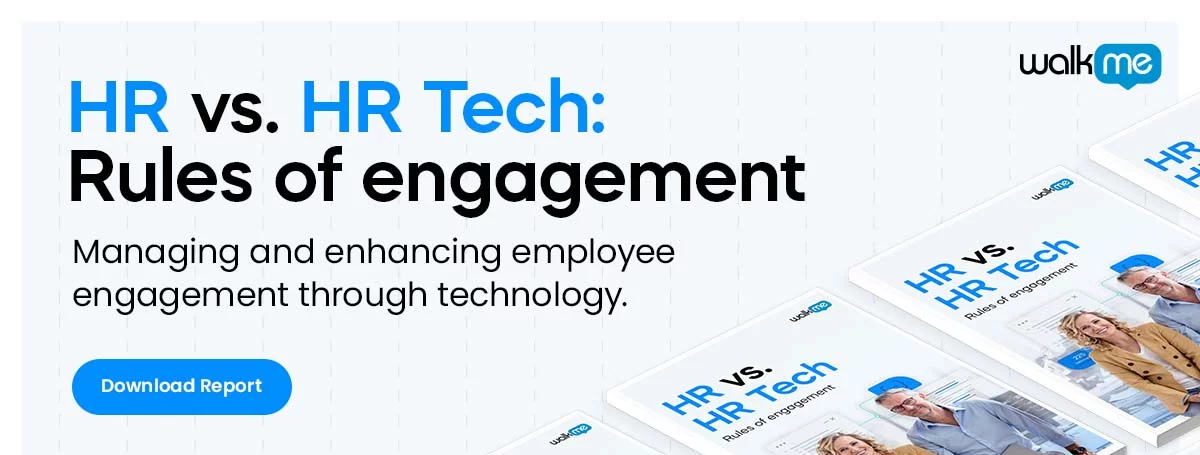
Enterprise offboarding is an oft-overlooked stage in the employee journey, but it shouldn’t be. Neglecting this aspect of the employee experience can be detrimental to the organization, its reputation, the workplace experience, and more.
In this post, we’ll look at six reasons why every organization needs a structured offboarding program for their employees.
6 Reasons Why You Need a Structured Enterprise Offboarding Program
What is employee offboarding?
It is the a stage in the employee experience life cycle, conducted when an employee departs the organization.
The steps in this process vary from business to business, but there are a few key steps that should be included:
- Employees must complete certain documentation, such as signing paperwork and completing payroll documentation
- Physical equipment, such as computers, hardware, and ID cards, must be returned
- Exit surveys offer insight into why employees are leaving the company
Not all executives see the value in such a program however, so HR managers and CHROs may need to make a business case for it.
Here are a few benefits of investing in enterprise offboarding:
1. Maintain IT security and corporate security
After an employee leaves your company, you still need to go through the process of ensuring they don’t have access to internal systems.
This involves steps such as:
- Changing relevant logins and passwords
- Ensuring the employee’s accounts have been closed
- Reacquiring IT hardware from the employee
- Obtaining other corporate property
Performing these steps can minimize the potential for either an accidental or an intentional security breach by that employee.
It can also be important for compliance in industries such as healthcare or finance, since allowing former employees access to systems after departure can be illegal.
2. Leave employees with a positive impression
Former employees can leave with either a good taste in their mouth or a sour one.
The way the termination of an employee is handled can make a big difference in that equation, so it is crucial to handle this step with care.
There are a few reasons why:
- Good impressions bolster employer branding and the company’s public reputation
- When employees enjoy the workplace, they can refer others to work there, which can reduce recruitment costs
- If the exit process is handled poorly, employees may contact former coworkers, thus producing a negative impression within the existing workforce
Finally, as a general rule, it is just good business to maintain positive relationships as much as possible.
3. Gain insight into the employee experience
Exit interviews are a great way to get feedback from employees about why they left the company so that you can improve the overall employee experience.
They also help you understand:
- How employees view the organization
- What the departing liked about the company and what they didn’t like
- How the workplace could be improved
To make the most of this information, it should be delivered through the appropriate channels and, most importantly, proactively applied.
4. Understand team dynamics and the organizational culture
What is organizational culture and how does it impact the employee experience?
Many HR professionals already know the answer: the employee experience depends on both hard and soft factors. “Soft” elements are those such as communication, while “harder” elements include systems, processes, and technology.
In addition to understanding the controllable aspects of the employee experience – such as workflows, systems, and processes – exit surveys offer insight into team dynamics.
For instance, an exit survey can tell managers:
- How well the employee fit within the company culture
- Which types of personalities are ideal for the company
- If hiring practices need to be adjusted
Since team dynamics and personalities are perhaps more important in business success than skills, this is one of the most important reasons to conduct exit interviews.
5. Stay connected with employees (when relevant)
Another reason to create a positive departure experience is that former employees may always return.
When both former employer and employee maintain positive ties, the door is left open to further collaboration.
In some cases, former may return as full-time employees.
In others, as part-time workers, contract workers, or consultants.
Either way, there is no good reason not to, at the very least, avoid burning bridges when an employee leaves.
6. Improve existing and future employee performance metrics
Ultimately, all of the above points contribute to improving the employee experience, employee performance, and organizational performance.
The more that employers can understand employees’ negative experiences – and the more that they can maintain positive relationships with existing and former workers – the easier it will be to make improvements.
That being said, it is good to remember the well-known saying about performance improvement:
“You can’t improve what you can’t measure.”
Therefore, when designing exit surveys, it is necessary to:
- Keep track of employee answers
- Ensure that those answers can be scored and compiled
- Send comments and data back to the relevant parties
- Review exit survey data in the appropriate strategy meetings
With a structured, data-driven approach, all of this information can then be reinjected back into the organization and used to improve everything from employee onboarding to employee training – and, ideally, employee productivity and retention.
WalkMe Team
WalkMe spearheaded the Digital Adoption Platform (DAP) for associations to use the maximum capacity of their advanced resources. Utilizing man-made consciousness, AI, and context-oriented direction, WalkMe adds a powerful UI layer to raise the computerized proficiency, everything being equal.



